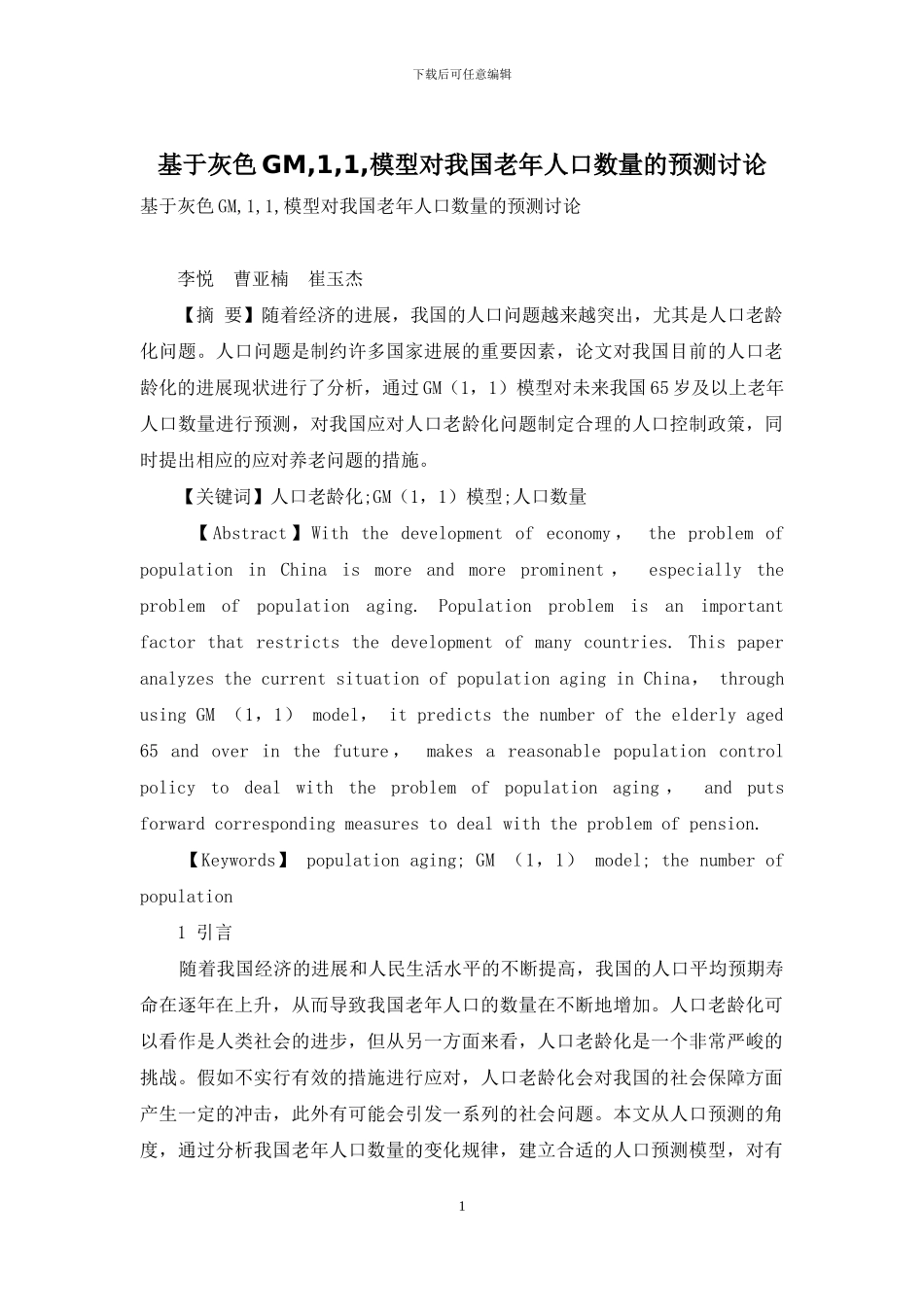下载后可任意编辑基于灰色 GM,1,1,模型对我国老年人口数量的预测讨论基于灰色 GM,1,1,模型对我国老年人口数量的预测讨论 李悦 曹亚楠 崔玉杰 【摘 要】随着经济的进展,我国的人口问题越来越突出,尤其是人口老龄化问题。人口问题是制约许多国家进展的重要因素,论文对我国目前的人口老龄化的进展现状进行了分析,通过 GM(1,1)模型对未来我国 65 岁及以上老年人口数量进行预测,对我国应对人口老龄化问题制定合理的人口控制政策,同时提出相应的应对养老问题的措施。 【关键词】人口老龄化;GM(1,1)模型;人口数量 【 Abstract】 With the development of economy , the problem of population in China is more and more prominent , especially the problem of population aging. Population problem is an important factor that restricts the development of many countries. This paper analyzes the current situation of population aging in China, through using GM (1,1) model, it predicts the number of the elderly aged 65 and over in the future , makes a reasonable population control policy to deal with the problem of population aging , and puts forward corresponding measures to deal with the problem of pension. 【Keywords】 population aging; GM (1,1) model; the number of population 1 引言 随着我国经济的进展和人民生活水平的不断提高,我国的人口平均预期寿命在逐年在上升,从而导致我国老年人口的数量在不断地增加。人口老龄化可以看作是人类社会的进步,但从另一方面来看,人口老龄化是一个非常严峻的挑战。假如不实行有效的措施进行应对,人口老龄化会对我国的社会保障方面产生一定的冲击,此外有可能会引发一系列的社会问题。本文从人口预测的角度,通过分析我国老年人口数量的变化规律,建立合适的人口预测模型,对有1下载后可任意编辑效地控制人口增长提供理论依据。 灰色系统理论中最常用的模型是 GM(1,1)模型,通过累加生成数据的方式,减弱了预测系统的随机性,使原本无序的序列呈现出某种规律,灰色模型在人口预测等各个领域有着广泛的应用。李鲁(20XX)运用灰色 GM(1,1)模型对安徽省 20XX 年到 20XX 年 65 岁及以上的老年人口...


